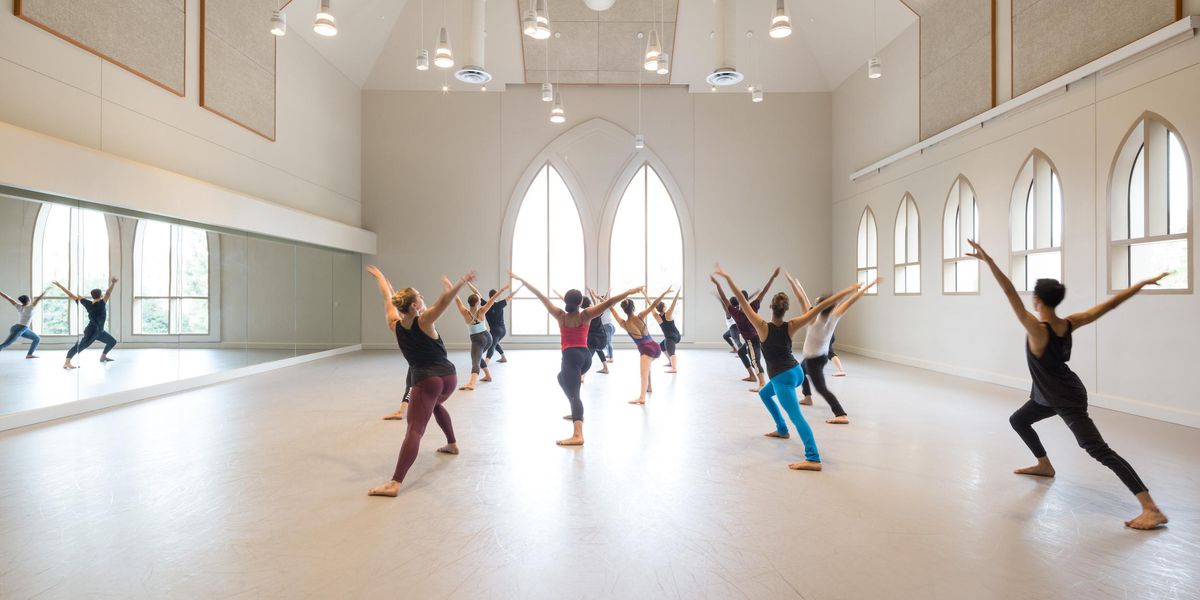Are You Stretching the Wrong Way?
All-too-common mistakes many dancers don’t even realize they’re making
Keelan Whitmore used to be on a tireless quest for elastic hamstrings
—until he began experiencing “a very weird and scary feeling” each time he finished stretching. “I’d have a sharp, shooting pain on the outside edge of the back of my knee,” says the Alonzo King LINES Ballet dancer. Only after seeking physical therapy for another injury did he learn that his habit of doing intense hamstring stretches before class was actually overstretching the back of his knee joint.
Unfortunately, Whitmore’s mistake is not unusual. With their constant pursuit of greater flexibility, dancers have a tendency to favor extreme, sometimes dangerous stretches, instead of following a gradual approach. This impulse stems from several misconceptions, often ingrained at an early age by well-meaning teachers. It usually takes a painful visit to the physical therapist before dancers learn that their risky stretching practices are actually creating weaknesses in their bodies. The first step in switching over to a safe stretching regimen—one that increases muscle flexibility without sacrificing the stability needed for balances and the power needed for jumps—is losing these bad habits.
Don’t Hold Static Stretches Before Warming Up
Static stretching, or holding a stretch position for more than 30 seconds, is one way to increase flexibility—but it only works if you’re warm. Stretching cold muscles rarely targets the muscle belly and often leads to overstretching ligaments and tendons, increasing instability and resulting in the kind of pain Whitmore felt in his knee. It also decreases the muscle’s ability to contract, resulting in less power and available strength once you start dancing. According to a recent article in The New York Times, scientists have found that static stretching before exercise can reduce strength in the stretched muscles by about 5.5 percent, and even more if you hold a stretch for longer than 90 seconds—something a dancer definitely does not want before a class or performance!
Physiologists recommend instead doing a dynamic stretching routine after a general five-minute warm-up: Rather than simply sitting in the splits or throwing a leg up on the barre, keep the muscles moving as you open up your range of motion. Doing lunge walks or yoga’s sun salutations will help you flow through stretch positions while increasing your heart rate and circulation and raising your body’s temperature. That way, your muscles warm up as they loosen up.
Take It Easy on Your Hamstrings
To achieve a high grand battement or développé, you need more than flexibility: You also need stability and strength. Look at your body as a system of checks and balances: Try to build strength in the muscles that assist in the action of lifting and holding your leg—the deep hip flexors, quadriceps and core muscles—as much as you increase the flexibility of your hamstrings. A tree can only grow taller when roots of the same length grow into the ground, just as a leg can only be lifted higher into the air when the connection to your abdominals is equally deepened.
What’s more, don’t get so caught up in hamstring stretches that you neglect your other muscles. Leigh Heflin, program coordinator of the Harkness Center for Dance Injuries at New York University’s Langone Medical Center’s Hospital for Joint Diseases, warns that if you don’t stretch all areas of tightness, you could create imbalances in the body. When a group of muscles such as the hamstrings is overstretched, the opposing muscle group, in this case the quadriceps, will be tight and potentially overworked. Be sure to spend an equal amount of time stretching your quads as you do your hamstrings.
Use Caution in the Yoga Studio, Too
Dancers typically think of yoga as a safe place for restorative work and a gentle way to limber up. But just because the room might be warm does not mean that your muscles are. It can be dangerous to sink deep into positions that feel great, such as downward facing dog, especially when they are held for longer than a minute. Teachers will often cue the room to go further into a stretch, but because of dancers’ extreme flexibility, following that advice could push vulnerable joints too far. Be careful to maintain proper form, and hold your body with activated muscles rather than dropping into hyperextension.
Skip the Stretch, Grab the Roller
Typically, when dancers feel tight, their automatic response is to try to stretch it out. But stretching alone won’t help if that tightness is caused by tension in your fascia, the connective tissue that provides support and protection for the muscles. “This soft tissue can become restricted, resulting in muscle tension and sometimes pain,” explains Heflin. In this case, dancers should actually be reaching for a foam roller in order to help release the fascia. “Foam rolling can be done prior to activity, even on cold muscles, or post-activity to release inhibited muscles,” says Heflin. “Although it doesn’t necessarily increase range of motion, it can allow more freedom in a muscle that was otherwise restricted.”
Now that he’s recovered from injury, Whitmore has learned that the key to stretching effectively is “to be incredibly warm, by first activating the muscles and getting blood flowing throughout my body” before working toward greater flexibility. Performing simple exercises, such as the bridge—lying on the back, then elevating the hips with the feet flexed (heels digging into the ground)—has also helped him strengthen his hamstrings, and build more awareness about potential muscle weaknesses. For him, stretching is no longer only about working toward greater flexibility—it’s about achieving a more balanced body.
Photos by Nathan Sayers; modeled by Jane Anthony of NYU/Tisch dance department
Candice Thompson, a former Milwaukee Ballet dancer, is a certified Pilates teacher and a writing fellow at Columbia University.




